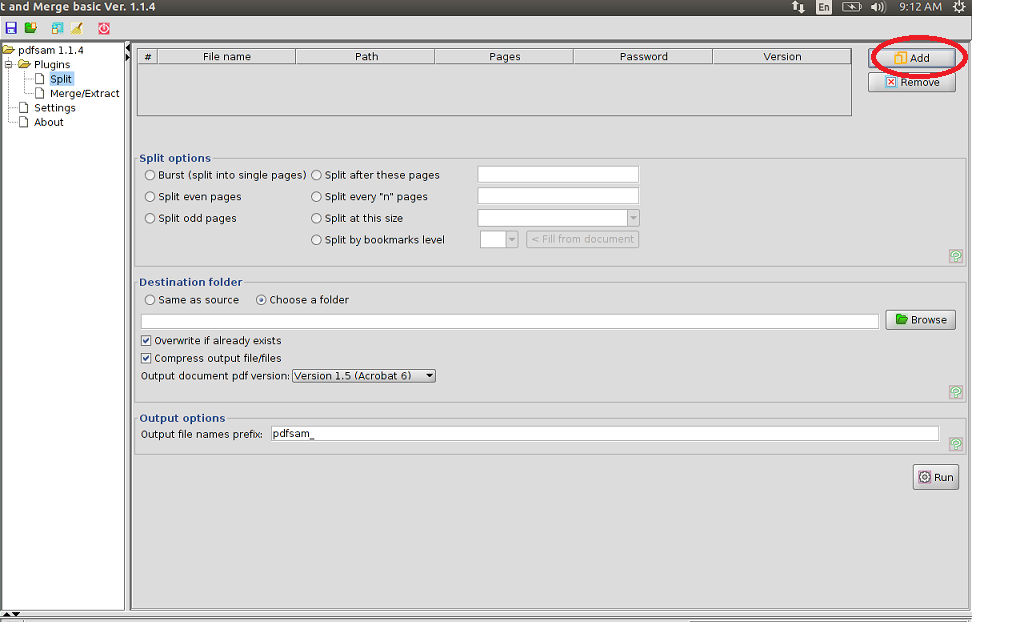
The number separated from the rotation by a colon “ : ” is the number of the page you want to rotate. A rotation of -90 is the same as a rotation of +270. You can also specify the rotation in degrees counterclockwise, using a negative number, but you don't have to. You can rotate a page 90, 180, or 270 degrees. the +90 means turn the page 90 degrees clockwise.
#PDF MERGE LINUX PDF#
To rotate a page, we create a new PDF that is the same as the input PDF with the specified page rotated. This creates a single multi-page PDF called "chapter2.pdf". qpdf -empty -pages large.pdf 8-13 - chapter2.pdf Effectively, what we're doing here is a PDF merge, but we're just "merging" pages from a source file. Please note that we do not include the -split-pages option. If you want to extract a range of pages and store it in a single PDF, use a command from this form. The extracted pages have names based on “section.pdf” with a sequential number added. Page ranges are used to specify the pages or ranges we want, but each page is still stored in a single PDF. If we issue this following command, we will split a collection of single page PDF files. If you don't want to split each page, use page ranges to select the pages you want.
#PDF MERGE LINUX SERIES#
The output is a series of sequentially numbered PDF files. the -split-pages option says qpdf what kind of action are we doing? qpdf summary.pdf page.pdf -split-pages Each new file has a number added to the base name. The file we are splitting is "summary.pdf", and the output file is provided as "page.pdf". To split a PDF into separate PDF files, each with a single page, the syntax is simple. The opposite of merging PDF files is splitting PDF files. We can see that page 10 is page 55 of the source PDF. This means there are 10 pages in "summary.pdf" The output file, "summary.pdf" contains pages 1 to 3, 7, 11, 18 to 21 and 55 of the input PDF file. Here, we are requesting a very specific set of pages from a large PDF file and creating a summary PDF file. Page ranges can be as detailed as you like. qpdf -empty -pages first.pdf 1-2 second.pdf 1 - combined.pdf Note that if "combined.pdf" already exists, it is not overwritten. This will extract pages one and two from “first.pdf” and page two from “second.pdf”. We can use page ranges by adding the page numbers or ranges after the file names from which the pages will be extracted. This command creates a new file called “all.pdf” that contains all the PDF files in the current directory. You can use wildcards instead of listing a large number of source files. There are two pages in “first.pdf” and one page in “second.pdf”. If we search for PDF files with ls We will see our two original files, intact, and the new PDF called “combined.pdf”.

combined.pdf: The name of the PDF to be created.-: Indicates the end of the command options.We have not used page ranges, so all pages will be used. first.pdf second.pdf: The two files from which we are going to extract the pages.-pages: He says qpdf we are going to work with pages.You could argue that "first.pdf" and "second.pdf" are input files, but qpdf considers them as command line parameters. qpdf -empty -pages first.pdf second.pdf - combined.pdf To combine two PDF files to form a new PDF file, use this format command. If you only provide the PDF names, all pages are used. the -pages The option allows you to choose pages. this says qpdf don't wait for an input file. If a command doesn't require one, you need to use the -empty option instead. For example many of the commands expect an input PDF file. At first, some of the qpdf The command line syntax can seem confusing.


 0 kommentar(er)
0 kommentar(er)
